How to Build a Basic CRUD App with Solid?
In this walkthrough, you’ll learn how to develop a complete CRUD (create, read, update, delete) application using SolidJS.
We’ll use Back4app as our backend service, allowing you to manage data effortlessly. This guide walks you through establishing a Back4app project, crafting a flexible data schema, and coding CRUD operations within a SolidJS application.
Initially, you will set up a Back4app project called Basic-CRUD-App-SolidJS. This project provides a robust, schema-less data storage environment. You’ll define your data model by creating collections and fields either manually or with the assistance of Back4app’s AI Agent.
Next, you will handle your backend data using the user-friendly Back4app Admin App. Finally, you will integrate your SolidJS application with Back4app through the Parse JavaScript SDK (or via REST/GraphQL APIs as necessary) while enforcing secure access controls.
By the end of this tutorial, you will have a production-ready SolidJS application that performs essential CRUD functions along with secure user authentication and data management.
- How to create a SolidJS-based CRUD app with a modern, no-code backend.
- Best practices for designing a scalable backend and connecting it with your SolidJS app.
- How to navigate the Back4app Admin App for streamlined data operations.
- Deployment strategies, including Docker containerization, to launch your SolidJS application seamlessly.
Before you begin, make sure you have:
- A development environment set up for SolidJS. We recommend using Visual Studio Code or any preferred editor, along with Node.js (v14 or higher).
- Basic knowledge of SolidJS, modern JavaScript, and RESTful APIs. Brush up with the SolidJS documentation if needed.
- Log in to your Back4app account.
- Click the “New App” button on your dashboard.
- Name your project: Basic-CRUD-App-SolidJS and follow the prompts to complete the setup.
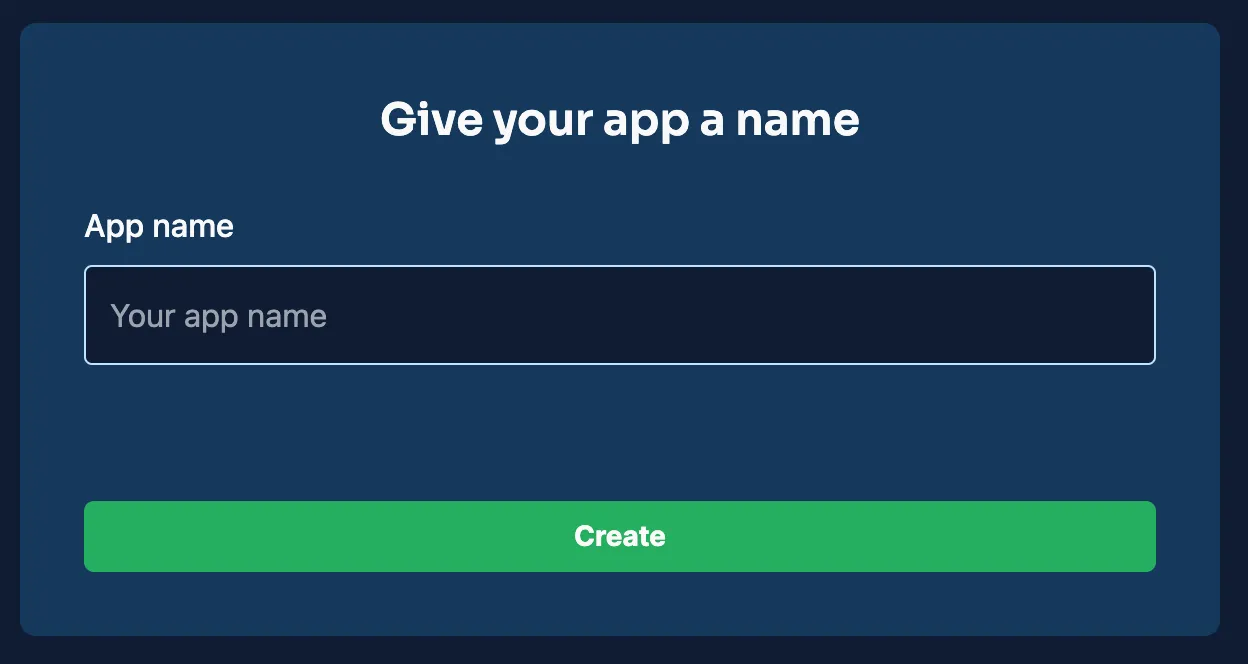
After creating your project, it will appear on your dashboard, laying the foundation for your backend.
For this CRUD application, you will set up several collections in your Back4app project. Below are examples of the main collections and fields required.
This collection stores information about each item.
Field | Type | Purpose |
|---|---|---|
_id | ObjectId | Auto-generated unique identifier. |
title | String | Name of the item. |
description | String | Brief description of the item. |
createdAt | Date | Timestamp when the item was added. |
updatedAt | Date | Timestamp for the last update. |
This collection manages user credentials and authentication data.
Field | Type | Purpose |
|---|---|---|
_id | ObjectId | Auto-generated unique identifier. |
username | String | Unique user identifier. |
String | Unique email address. | |
passwordHash | String | Encrypted password for secure access. |
createdAt | Date | Account creation timestamp. |
updatedAt | Date | Timestamp for last account update. |
You can create these collections and add fields via the Back4app dashboard.
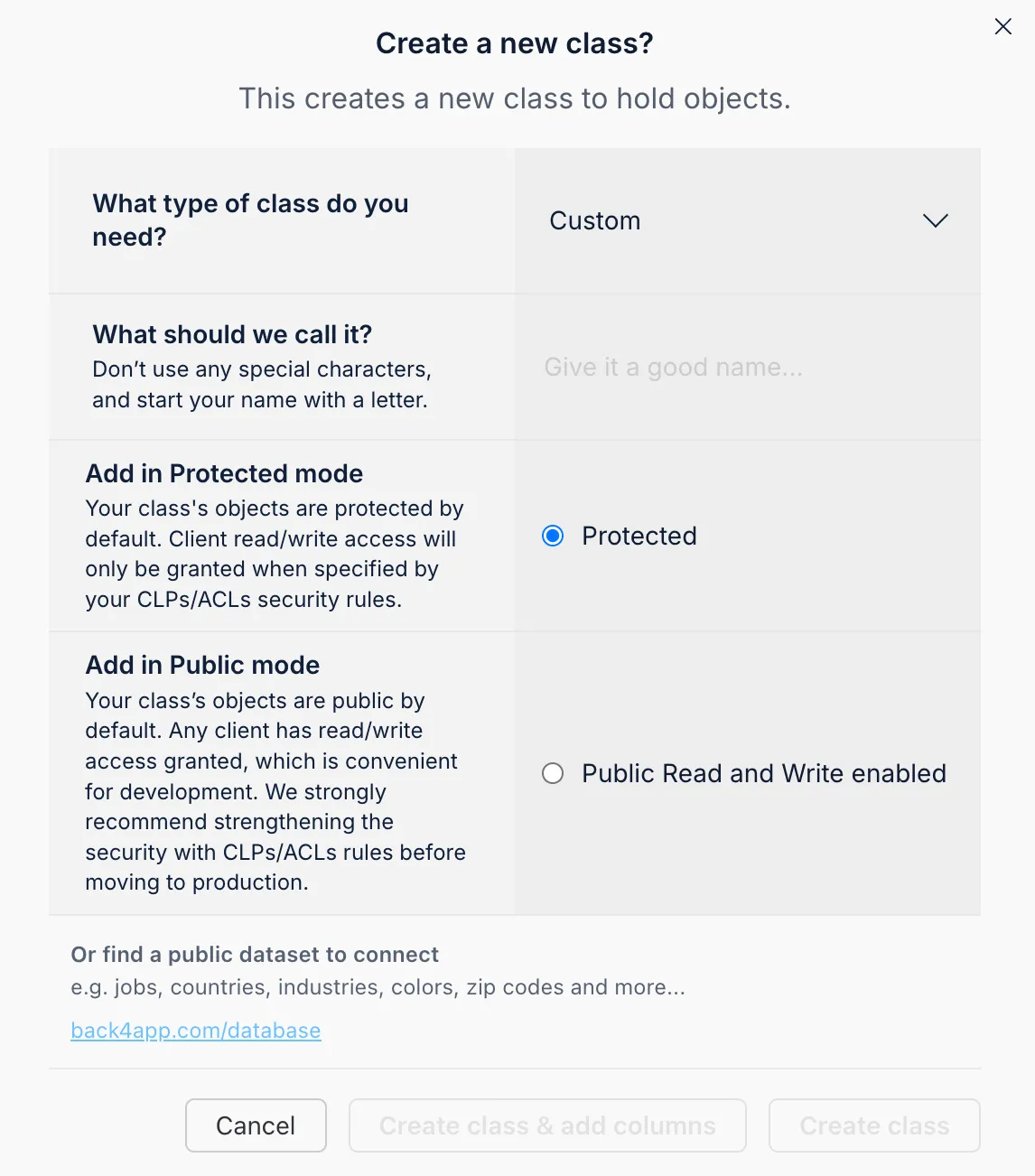
To add a new field, choose the appropriate data type, set the field name, assign a default value if needed, and mark it as required if necessary.
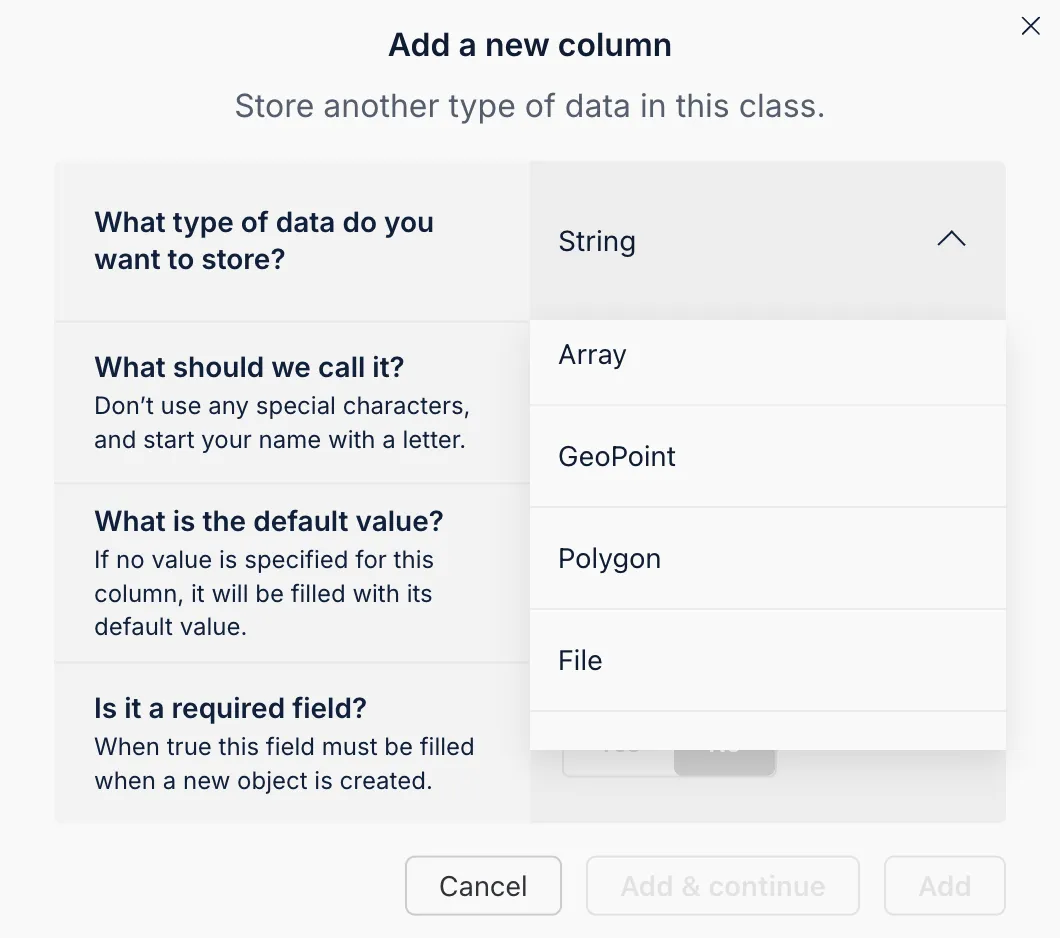
The integrated Back4app AI Assistant can automatically create your data schema based on your instructions, saving you time and ensuring consistency.
- Open the AI Assistant: Access it via your project settings in the Back4app dashboard.
- Detail Your Data Model: Enter a detailed description of the collections and fields required.
- Confirm the Setup: Review the suggested schema and approve to finalize the configuration.
This AI-powered method streamlines your schema creation process, ensuring an optimized data model.
The Back4app Admin Dashboard provides a no-code interface for efficient backend management. Its drag-and-drop features make it easy to perform CRUD tasks such as adding, viewing, updating, and deleting records.
- Go to the “More” menu in your Back4app dashboard.
- Select “Admin App” and click “Enable Admin App.”
- Set up your admin credentials by creating an initial administrator account. This will also establish necessary roles (like B4aAdminUser) and system collections.
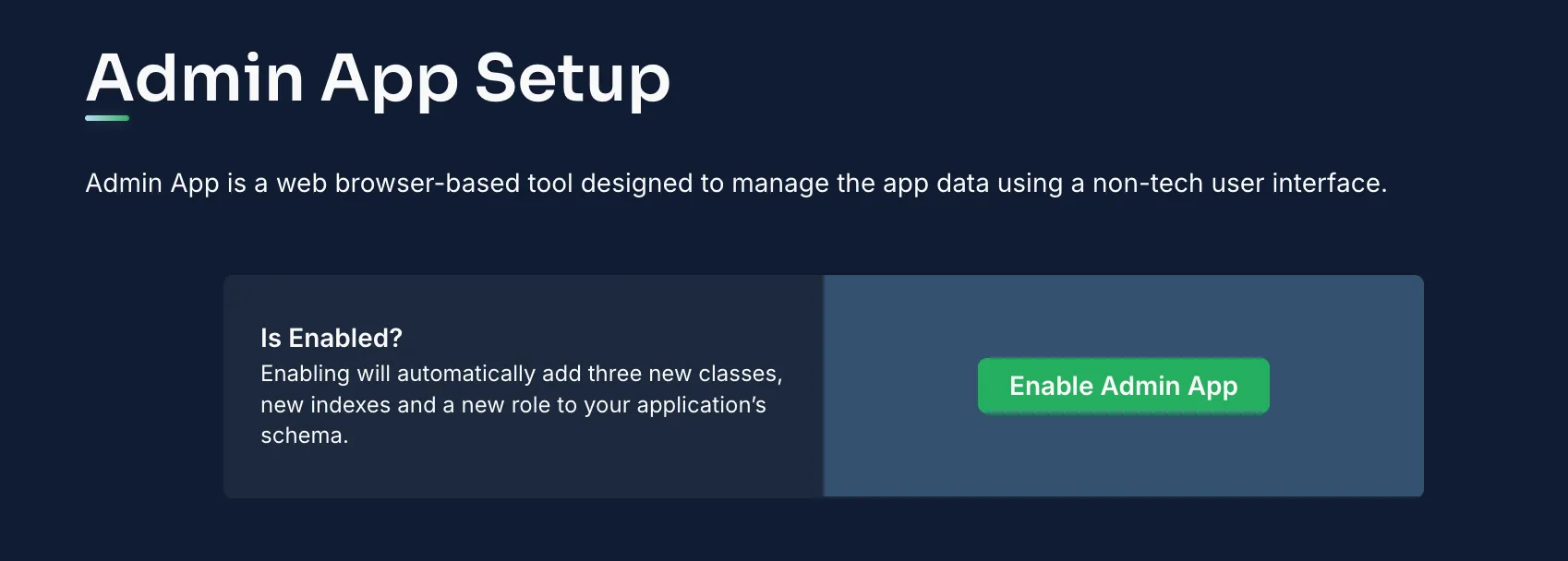
After activation, log into the Admin Dashboard to manage your app’s data.
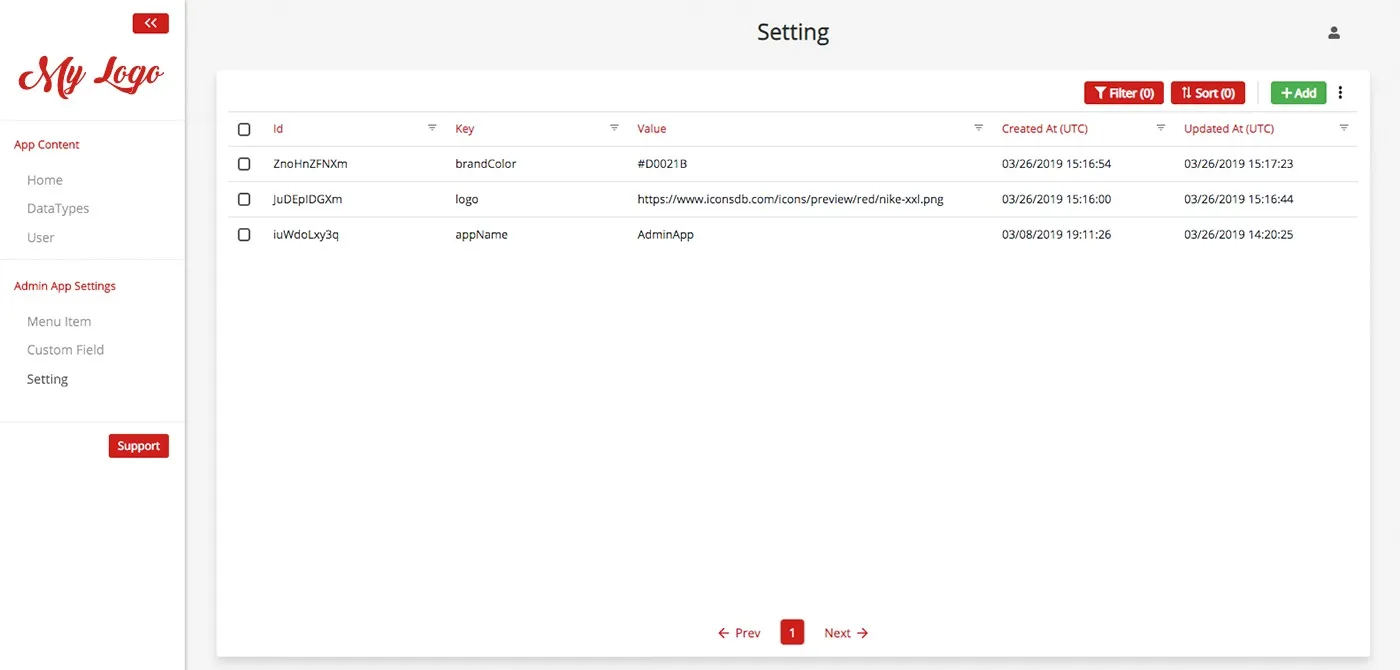
Within the dashboard, you can:
- Add Records: Use the “Add Record” feature in any collection (e.g., Items) to input new data.
- View/Edit Records: Click on an entry to inspect or modify its details.
- Delete Records: Remove obsolete or unwanted entries.
This interface simplifies data management, offering an efficient and intuitive experience.
With the backend in place, the next step is to link your SolidJS application to Back4app.
Install the Parse JavaScript SDK: Run the following command in your project directory:
Bash1npm install parseConfigure Parse in Your Application: Create a configuration file (e.g., parseConfig.js):
JS1// parseConfig.js 2import Parse from 'parse'; 3Parse.initialize("YOUR_APPLICATION_ID", "YOUR_JAVASCRIPT_KEY"); 4Parse.serverURL = 'https://parseapi.back4app.com'; 5export default Parse;
If you prefer not to use the Parse SDK, you can execute CRUD operations via REST. For instance, here’s how to fetch items using the REST API:
Integrate these API calls into your SolidJS components as needed.
Protect your data by setting up ACLs for each object. For example, to restrict an item so that only its owner can access it:
Configure CLPs in your Back4app dashboard to enforce default access restrictions, ensuring only authorized users can interact with certain collections.
Back4app uses the built-in Parse User collection for authentication. In your SolidJS app, handle user registration and login as follows:
A similar strategy can be adopted for session management, password resets, and other authentication features.
Back4app streamlines the deployment process. You can deploy your SolidJS application through various methods, including Docker.
Build Your Application: Use your package manager to compile your SolidJS app. For example:
Bash1npm run build- Check the Build Output: Ensure the build folder contains all the necessary files.
A typical project structure might look like:
If you wish to containerize your app, create a Dockerfile in the project’s root:
- Connect Your Git Repository: Ensure your SolidJS project is hosted on GitHub.
- Configure Deployment: In your Back4app dashboard, choose Web Deployment, link your repository (e.g., Basic-CRUD-App-SolidJS), and select the appropriate branch.
- Set Build Commands: Define the build command (e.g., npm run build) and specify the output directory.
- Deploy Your Application: Click Deploy and monitor the logs until your app is live.
Great job! You’ve successfully created a SolidJS CRUD application integrated with Back4app.
You set up a project named Basic-CRUD-App-SolidJS, defined your Items and Users collections, and managed data through the Back4app Admin Dashboard.
Additionally, you connected your SolidJS app using the Parse JavaScript SDK (or REST/GraphQL) and applied solid security measures.
- Expand the Application: Add advanced features like search filters, detailed item views, or real-time data updates.
- Enhance the Backend: Experiment with cloud functions, third-party API integrations, or role-based access management.
- Learn More: Dive into the Back4app documentation and additional SolidJS tutorials to further refine your application.
Happy coding and best of luck with your SolidJS CRUD project!
